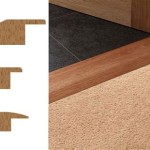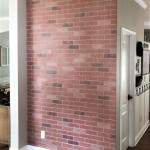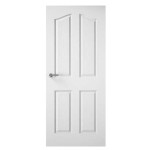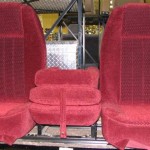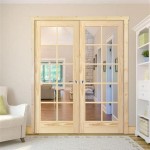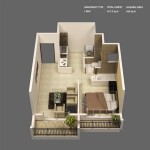```html
List Of Interior Design Styles
Interior design encompasses a vast array of styles, each reflecting different historical periods, cultural influences, and aesthetic preferences. Understanding these styles is crucial for creating a cohesive and visually appealing living space. This article provides a comprehensive overview of various interior design styles, highlighting their key characteristics and underlying principles. This knowledge is beneficial for both professional designers and homeowners seeking inspiration for their projects.
Key Considerations Before Choosing a Style
Before delving into the specifics of each style, it is important to consider several factors that will influence the final design. These include the existing architectural features of the space, the available budget, and the personal preferences of the occupants. Furthermore, the intended function of the room should also be taken into account, as certain styles are better suited to specific purposes. For instance, a formal living room may lend itself well to a traditional or elegant style, while a casual family room might be better suited to a more relaxed and comfortable aesthetic.
Another critical consideration is the flow and continuity throughout the home. While mixing and matching styles can be effective, it is crucial to maintain a cohesive overall design that ties the spaces together. This can be achieved through the use of consistent color palettes, similar materials, or recurring design motifs. Ultimately, the goal is to create a harmonious and balanced environment that reflects the individual's taste and lifestyle.
Classic and Traditional Styles
Traditional: This style is characterized by its formality, elegance, and attention to detail. It draws inspiration from 18th and 19th-century European decor, featuring rich colors, ornate furniture, and luxurious fabrics. Key elements include dark wood tones, intricate moldings, and patterned wallpapers. Furniture is often upholstered in velvet, silk, or damask, and accessories such as chandeliers, antique mirrors, and decorative artwork are commonly used. The overall effect is one of timeless sophistication and refined taste.
Transitional: A blend of traditional and contemporary, transitional design offers a balanced and versatile aesthetic. It combines the classic elements of traditional style with the clean lines and simplicity of modern design. The color palette typically consists of neutral tones such as beige, gray, and cream, with occasional pops of color. Furniture is often upholstered in comfortable fabrics like linen or cotton, and accessories are kept to a minimum. This style is ideal for those who appreciate the elegance of traditional design but prefer a more relaxed and updated feel.
Victorian: Characterized by opulence, extravagance, and highly ornate details. Drawing inspiration from the reign of Queen Victoria, it features plush fabrics like velvet and silk, rich colors such as jewel tones and deep reds, and intricate patterns like florals and damasks. Furniture is often heavily carved and upholstered, with embellishments like tassels, fringe, and buttons. Accessories such as chandeliers, ornate mirrors, and collections of curiosities are common. The overall effect is one of drama, romance, and excessive luxury.
Modern and Contemporary Styles
Modern: Rooted in the early to mid-20th century, modern design emphasizes functionality, simplicity, and clean lines. It rejects ornamentation and embraces minimalism. Key elements include open floor plans, large windows, and a focus on natural light. Furniture is typically made from materials such as wood, metal, and glass, and is designed to be both functional and aesthetically pleasing. The color palette is often neutral, with accents of bolder colors used sparingly. Modern design is about creating a clean, uncluttered, and efficient living space.
Contemporary: Often confused with modern design, contemporary style is more fluid and ever-evolving. It reflects current trends and incorporates elements from various design movements. It embraces openness, natural light, and sustainable materials. Furniture is often sculptural and innovative, and the color palette can range from neutral to bold, depending on the current trends. Contemporary design is about creating a space that is both stylish and functional, while also reflecting the individual's personal taste.
Mid-Century Modern: A specific subset of modern design, mid-century modern refers to the style that was popular from the 1940s to the 1960s. It is characterized by clean lines, organic shapes, and a focus on functionality. Key elements include furniture made from materials such as wood, metal, and vinyl, often with tapered legs and simple silhouettes. The color palette includes warm and earthy tones, as well as pops of bright colors like orange, yellow, and turquoise. Mid-century modern design is about creating a comfortable and stylish living space that is both timeless and modern.
Minimalist: Minimalist design takes the principles of modernism to the extreme, stripping away all unnecessary elements to create a truly uncluttered and serene space. It is characterized by its simplicity, functionality, and lack of ornamentation. Key elements include neutral color palettes, clean lines, and a focus on natural light. Furniture is kept to a minimum and is chosen for its functionality and aesthetic appeal. The goal of minimalist design is to create a tranquil and calming environment that promotes clarity and focus.
Global and Eclectic Styles
Bohemian: Bohemian design celebrates individuality, creativity, and a free-spirited lifestyle. It is characterized by its eclectic mix of colors, patterns, and textures. Key elements include layered textiles, vintage furniture, and global influences. Plants are often used extensively to create a lush and vibrant atmosphere. Bohemian design is about creating a space that is both comfortable and inspiring, reflecting the individual's unique personality and travel experiences.
Eclectic: Eclectic design is about mixing and matching different styles, periods, and cultures to create a unique and personalized space. It requires a skilled eye to ensure that the various elements work together harmoniously. Key elements include a balance of colors, textures, and patterns, as well as a mix of old and new furniture. The key to successful eclectic design is to find a common thread that ties the different elements together, such as a consistent color palette or a recurring design motif. Eclectic design is about creating a space that is both stylish and reflective of the individual's unique personality and interests.
Rustic: This style emphasizes natural materials and a connection to the outdoors. It often features exposed wood beams, stone fireplaces, and reclaimed wood furniture. The color palette is typically warm and earthy, with tones like brown, beige, and gray. Rustic design is about creating a cozy and inviting space that feels both comfortable and authentic.
Scandinavian: Scandinavian design is known for its simplicity, functionality, and emphasis on natural light. It is characterized by clean lines, neutral color palettes, and a focus on natural materials such as wood and wool. Furniture is often simple and functional, with a focus on comfort and practicality. Scandinavian design is about creating a bright and airy space that is both stylish and livable.
Industrial: Inspired by factories and warehouses, industrial design features exposed brick, concrete floors, and metal accents. It often incorporates reclaimed materials and vintage furnishings. The color palette is typically neutral, with tones like gray, black, and brown. Industrial design is about creating a raw and edgy space that is both functional and stylish.
Key Elements in Defining Interior Design Styles
Identifying and understanding the key elements of different interior design styles is fundamental to accurately classifying and implementing them. These elements typically include color palettes, furniture styles, material choices, lighting fixtures, and accent pieces. Each style exhibits a distinct combination of these elements which contribute to its overall aesthetic and feel.
For instance, the color palettes in Scandinavian design often favor light, neutral tones to maximize natural light and create a sense of spaciousness, while Bohemian design typically involves a riot of vibrant color and patterns to reflect the free-spirited ethos. Furniture in Modern design tends to be sleek and minimalist, focusing on functionality and form, while Victorian design often features ornate, heavily embellished pieces that exude luxury and grandeur.
Paying attention to these details aids not only in accurately defining each style, but also in mixing and matching elements from different styles while maintaining a cohesive look and feel in the space. It is therefore critical to understand the interplay of elements when designing any interior space.
```
Interior Design Styles Designteacher

Interior Design Package Unlimited Free Revisions Choose Your Style Home Makeover Renderings Ping List Included

Decorating Styles 101 Find The Interior Design You Love From House To Home

Interior Design Styles Archives Hk Interiors

Interior Design Styles 101 Redefining The Decor Ideas In 2024

10 Hot Upcoming Interior Design Books You Need To Put On Your Wish List The Collective

Leo Design Group The Most Popular Interior Styles For House

What Is My Interior Design Style Here S How To Find Out Welsh Studio

From A To Z Find Your Personal Style With Our Interior Design Dictionary Paris Agenda

Modern Interior Design Classic Styles Defined List Paperback Com
Related Posts

